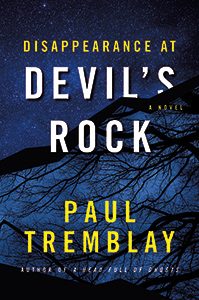Gary K. Wolfe reviews Genevieve Valentine
Fairytale redactions are at least as old as the first printed fairy tales, but it seems as if only in the last few decades they’ve become nearly a genre unto themselves. There are obvious hazards in converting archetypal old tales into contemporary literary ones, not least of which is reinventing figures who are nearly abstractions into believable individual characters; a lot of scholars objected to Disney’s giving names to the seven dwarfs, for example, because it erased the sort of pre-individuation function they served in the original tale. Similarly, the Grimm version of ‘‘The Twelve Dancing Princesses’’ pretty much differentiates them only by age, while the 12 princes they secretly meet are just place holding blobs. The real achievement of Genevieve Valentine’s The Girls at the Kingfisher Club isn’t just that it recasts the princesses as flappers in 1927 New York – even Anne Sexton saw that coming when in her version she described them as dancing ‘‘like taxi girls at Roseland’’ – but in delicately balancing her language between the transparent directness of the folktale and the contemporary sensibility of the novel. Valentine’s version isn’t entirely a comedy (although it has its moments) but at times the tone reminded me of Ball of Fire, Howard Hawks’s classic screwball take on Snow White – maybe because of the setting and the resourceful tough-mindedness of the two major sisters, Jo and Lou.
Despite its Jazz Age setting and some obvious research that went into it (chapter titles are taken from period song lyrics, for example), Valentine isn’t out to present a densely textured portrait of 1920s New York. There are only a handful of references to contemporary events (such as the Sherry-Netherland hotel fire), and the songs they dance to are generically referred to as foxtrots, waltzes, or Charlestons, rather than by titles. There are friendly cops and bartenders, and hardly any mobsters at all, despite Prohibition. It’s a kind of dream version of New York in the same sense that the film Midnight in Paris was Woody Allen’s dream version of the Paris of the same era, and this not-quite-believable setting helps the novel retain some of the abstract appeal of its source.
It does have one whopper of a Gothic villain, and he’s enough to give the sisters’ home life a creepy echo of novels like V.C. Andrews’s Flowers in the Attic. The reason there are 12 sisters is that their father, a wealthy businessman, had basically bred their mother to death trying unsuccessfully to gain a male heir. As daughter after daughter arrived, he exiled them as virtual prisoners to the third floor of their Upper East Side mansion, keeping himself so remote that some of the younger sisters have never even met him. As the girls grow up in nearly total isolation from their city, the older Jo and Lou concoct a plan to sneak out several nights a week to local speakeasies where (as in the original) they almost dance their shoes to pieces. At first, only the four oldest participate in the ruse, but over nearly a decade all the sisters join in, and become a kind of local legend referred to as ‘‘the princesses.’’ As the father proves himself to be even more venal that we’d at first suspected, the few connections the girls have made outside become a lifeline for their eventual escape, which Valentine describes in the novel’s most suspenseful sequence.
Valentine is keenly aware of the problems inherent in adapting such a story – after all, eight years of 12 girls doing the same thing night after night is hardly a story arc, and the 12 sisters are a challenge to differentiate as characters (sometimes Valentine resorts to labels like ‘‘practical Doris,’’ ‘‘proud Araminta,’’ and ‘‘brainy Rebecca’’), but once she opens the story up and gives each girl her own plotline it becomes surprisingly easy to care for all of them in different ways. Valentine knows exactly when to leave the Grimm Brothers behind in the construction of her own tale, which at times begins to take on overtones not only of Andrews but of Louisa May Alcott and even – just for a bit – Jerzy Kosinski’s Being There. With the aid of several fortuitous coincidences, some carefully placed secondary characters, and a few tearful reunions, she gets the story exactly where she wants it, and the result is a haunting fable that reads like a dream of forgotten history.








